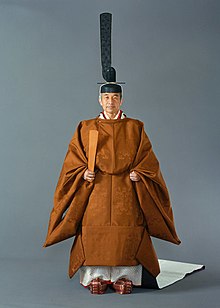One of the world’s most historical moments occurred on November 12, 1990, the enthronement of Emperor Akihito in Japan, often referred to as the ‘Sokui no Rei.’ This revered event marked a considerable turning point in Japan’s monarchy, signifying the beginning of the Heisei era.
Historical Background
After the death of his father, Emperor Hirohito, Emperor Akihito officially ascended the Chrysanthemum Throne on January 7, 1989. However, the official enthronement ceremony took place on November 12, 1990. This delay was out of respect for the mourning period observed following the Emperor’s passing.
The Event: ‘Sokui no Rei’
Emperor Akihito’s enthronement was a blend of solemn rituals bounded by centuries-old traditions and splendor. The ceremonies involved three significant events, namely the ‘Kashikodokoro-Kinen-no-Gi,’ the ‘Sokui no Rei,’ and the ‘Kyuchu-Sanden-no-Gi,’ all performed with outward opulence and deep-rooted spiritual significance.
The ‘Sokui no Rei’ ceremony was the focal point, where Emperor Akihito proclaimed his ascension to the world, confirming Japan’s harmony. World leaders and royal families from nearly 158 countries attended the ceremony, making it a globally acknowledged event.

Impact and Legacy
Emperor Akihito’s reign is a significant period in Japan’s history as he was the first emperor to take the throne after Japan adopted its post-war constitution. This constitution reframed the emperor’s role as “the symbol of the state and unity of the people,” a departure from the previous perception of the emperor as a divine ruler.
Interesting Information for Kids
Did you know that the Chrysanthemum Throne in Japan is the oldest hereditary monarchy globally? It has a history of over 2,600 years!
Educational Activity for Kids
Parents and educators can encourage kids to create a pictorial timeline of Japanese emperors or make a crown representing the Chrysanthemum Throne. It’ll help them understand this historical event better.
Conclusion
The Enthronement of Emperor Akihito not only marked a fresh chapter in Japan’s monarchy; it was an event that echoed the shifts Japan had undergone in modern history. Emperor Akihito’s reign was symbolic of the harmony in Japan’s socio-political life, a sentiment that echoed throughout his reign until his abdication in 2019, marking the end of the Heisei era.
References:
1. “Japan’s Enthronement of Emperor Akihito: A Solemn Ritual, Then a Gilded Parade,” New York Times, October 25, 1990.
2. “Emperor Akihito’s Reign: A Look Back.”, The Guardian, April 30, 2019,
3. “Meet the Akishinos of Japan”, The Japan Times, November 10, 2020.







charley Logan
March 2, 2025 / at 2:40 pm
This day in history is very important to us older people.
Remembering what was in the past.